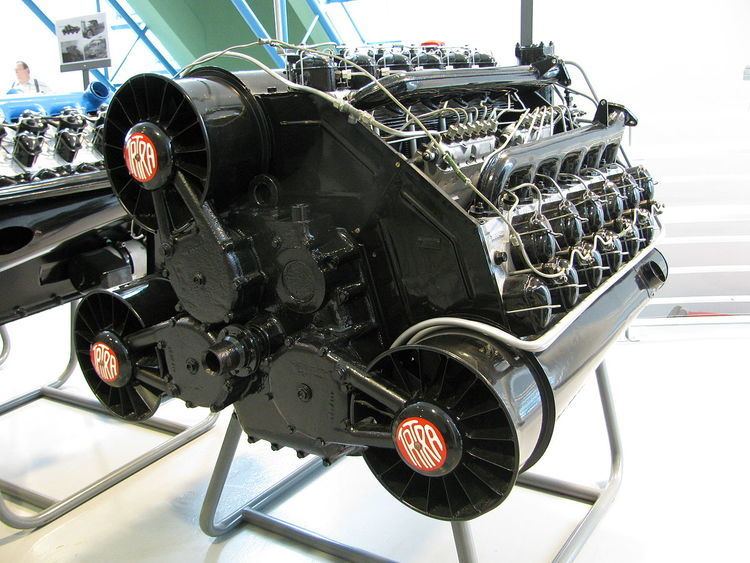 | ||
A W18 engine is an eighteen-cylinder W engine which usually has a single crankshaft with three banks of six cylinders arranged in a downward-pointing broad arrow configuration.
An early example is the Isotta Fraschini Asso 750 used to power the Italian Savoia-Marchetti S.55 seaplanes flown by Italo Balbo into Chicago in 1933. This engine used the same layout as a recent series of engines produced by Bugatti – basically a vertical six with two adjacent banks set at 60° each to make a W-18. In Hispano-Suiza 18R the angle was 80°.
In 1967, Scuderia Ferrari engineer Franco Rocchi built an experimental 65×50mm, 498 cc W3 engine, effectively a single crankpin module, in order to assess the potential for a 3-litre W18 Formula 1 engine. Although the engine developed 80 bhp at 11,000 rpm and 160 bhp per litre, the idea was abandoned. Subsequently in 1972 Formula 1 rules were changed to outlaw the use of engines with more than 12 cylinders. Rocchi used this module as the basis for a 3 1⁄2-litre W12 engine for Life Racing Engines in 1988, although this was infamously unsuccessful.
Recent W18 engines powered the Bugatti EB118, Bugatti EB218, Bugatti 18/3 Chiron and Bugatti EB 18.4 Veyron concept cars in the late 1990s. This engine featured three banks of six cylinders set 60° apart. The W18 engine was abandoned due to shifting problems.
